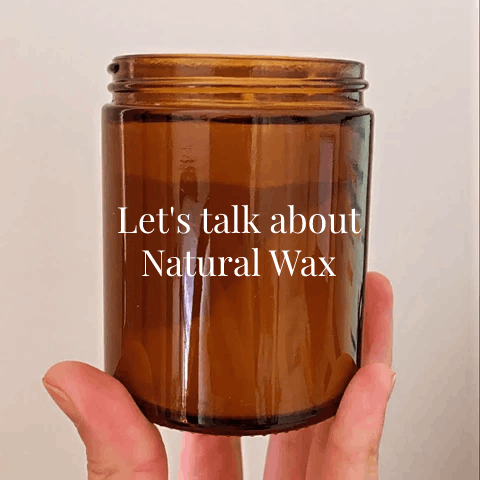
Hello! Tahls here, pourer of MOVINKA candles. As a newfound chandler and small business owner, I hope to share with you what I discovered throughout my journey that not all big candle brands talk about.
As a leading supplier, he has been on a mission to unveil the truth about other supplier’s claims. In doing so, he has ordered various big brand candles and has spent hundreds of dollars sending the wax to labs to get tested. When he shared the findings with me I actually felt so deceived by what I found out that as a candle maker myself now, I feel it’s almost my duty to share the information…so here goes.
🤯 Did you know that in Australia a candle only needs to contain 20% soy wax to be labeled a ‘Soy Candle’?
🤔What is the rest made of you ask?
😳What does the average shopper see?
Now, it’s not to say non soy candles don’t work. In fact, arguably they work ‘better’. Better in the sense that they are easier to pour, reset perfectly each time and will likely not leave marks or what we call ‘wet spots’ on your jar when the temperature changes.
These aesthetic or ease of pour reasons are why big brands don’t always choose 100% pure wax.
BUT are you getting the clean burning candle, derived from a sustainable resource, that you thought you were buying when purchasing a ‘Soy’ candle? Think again!
❌ Studies have shown burning paraffin can release carcinogenic compounds linked to migraines and asthma.
❌ Paraffin is derived from Petroleum or Fossil Fuels, the manufacturing of which contributes to global warming.
❌ Palm oil, whilst a renewable resource, is often farmed unsustainably with vast amounts of forest in the Amazon and other sensitive locations burned to make way for palm oil farms.
On the other hand there is 100% pure coconut and soy wax which is:
💚 Vegan
💚 Derived from sustainable resources
💚 Burns clean (non toxic)
💚 Slower burn and releases less soot and smoke compared to parrafin.
💚 Completely biodegradable
💚 Coconuts do not require pesticides or fertiliser to grow and are harvested by hand.
💚 Creamy, natural texture
So what are the set backs?
Like many other natural materials, natural wax can be hard to tame. For this reason, it can:
💢 Leave a bumpy surface when resetting as there are no additives holding it together.

💢 Pull away from the jar in certain areas when the temperature changes, leaving unique marks/patterns on the jar. This is because natural wax shrinks and expands in direct relation to shifts in temperature. Watch as these marks move or disappear as soon as you light the candle.

Are these aesthetic setbacks worth the benefits? I think it’s a no brainer. It’s important to note that these bumps and marks have zero effects on the quality of your candle burn, so embrace the natural imperfections. In trade you’ll be getting a cleaner, longer and more sustainable burn.
When burning your next candle, take note of the texture and see if it resets perfectly each time. If so check out the label to see if they claim to be 100% pure Soy (or Coconut) wax. If not, then you can probably bet there is something other than soy in there. This might not be a deal breaker but it’s good to know what you’re purchasing, and know not to always trust marketing.
Thanks for reading! Now you can be an expert too 👩🏻🎓


